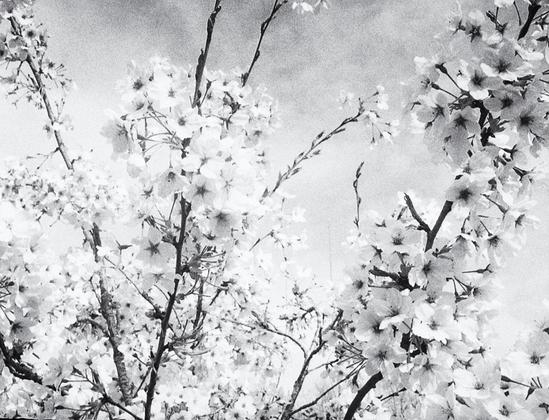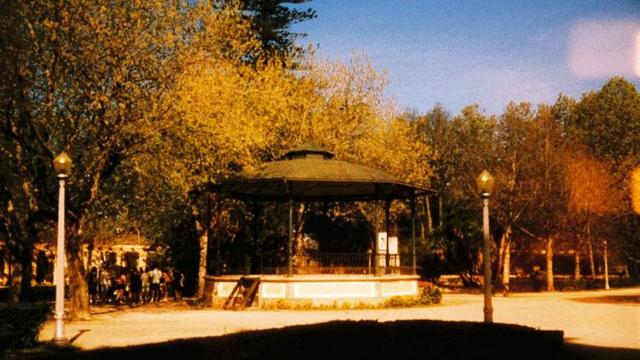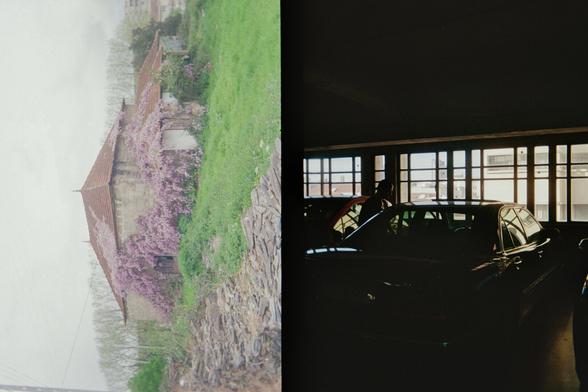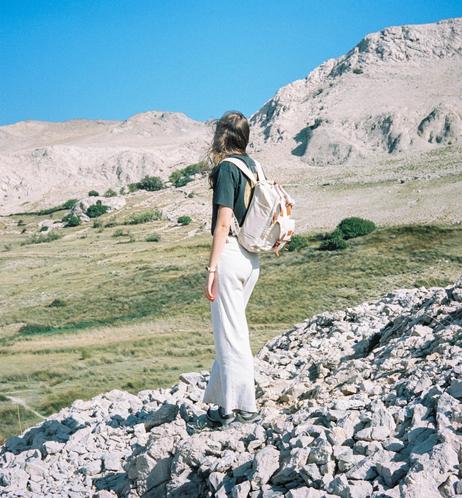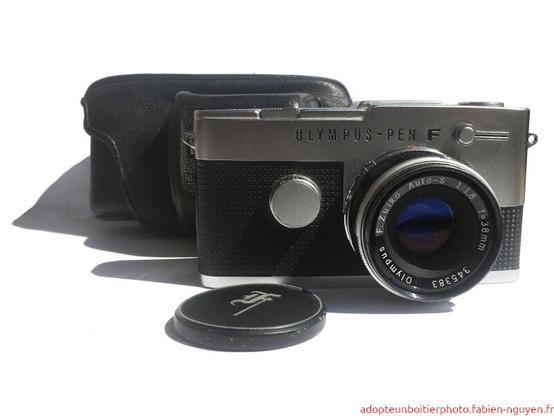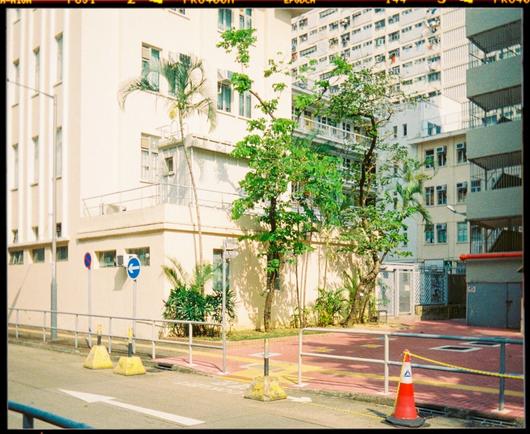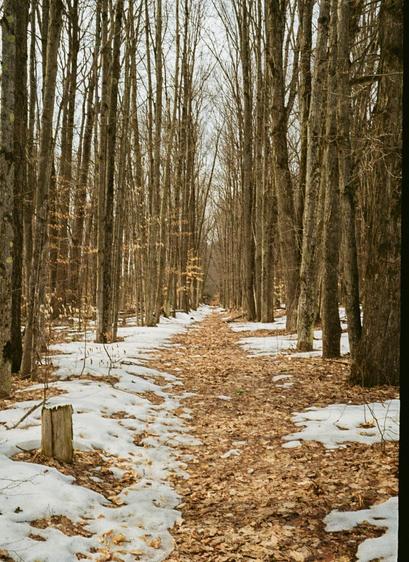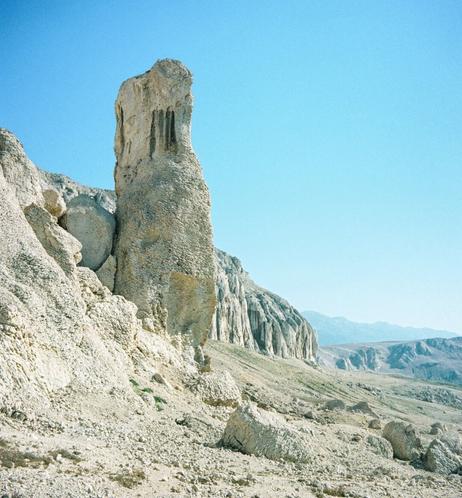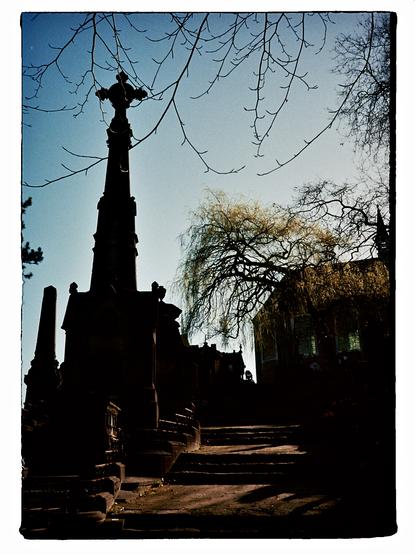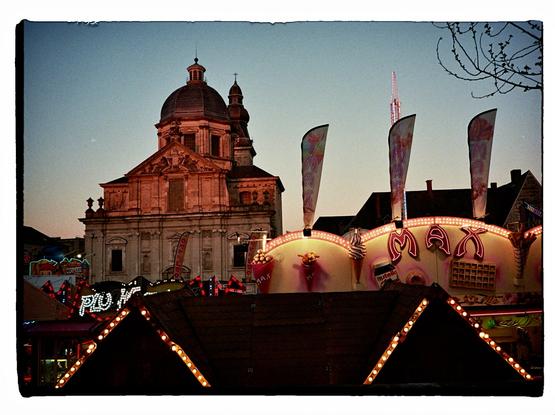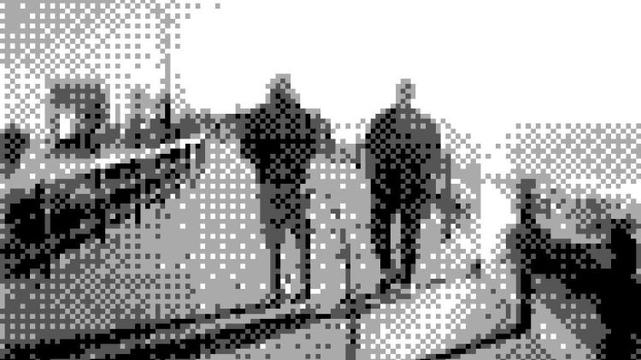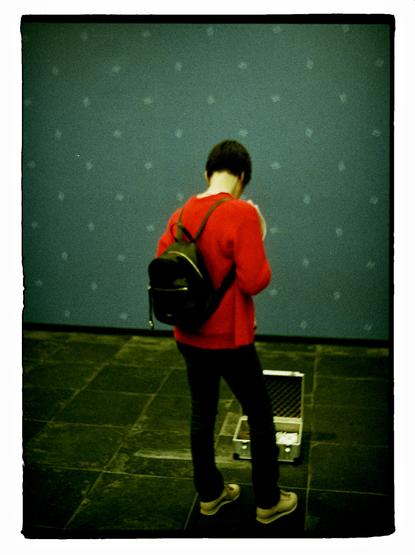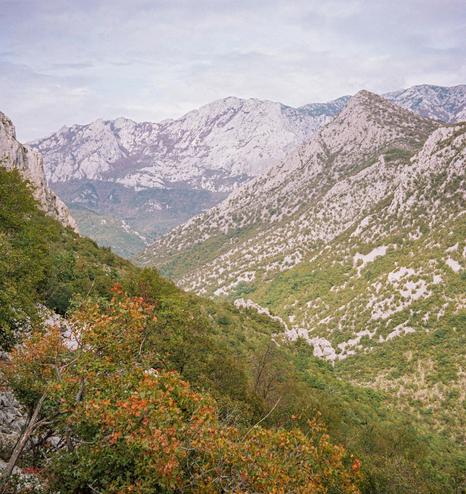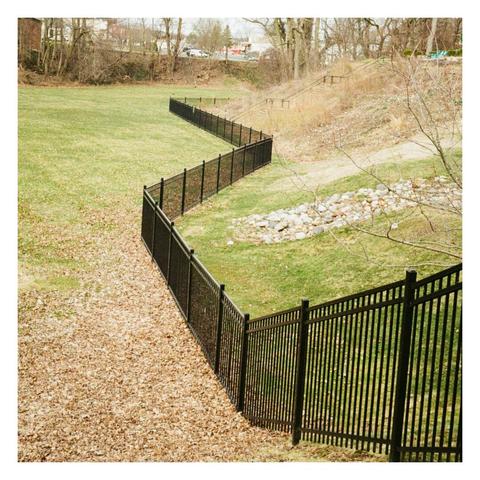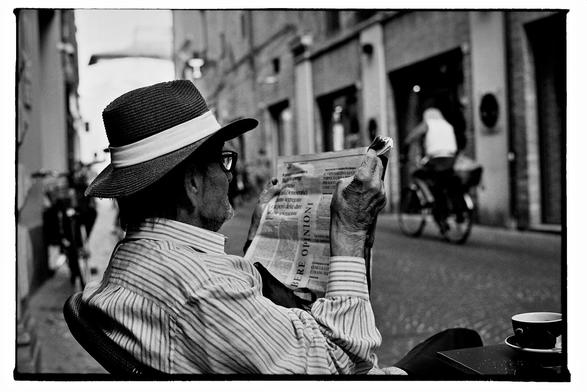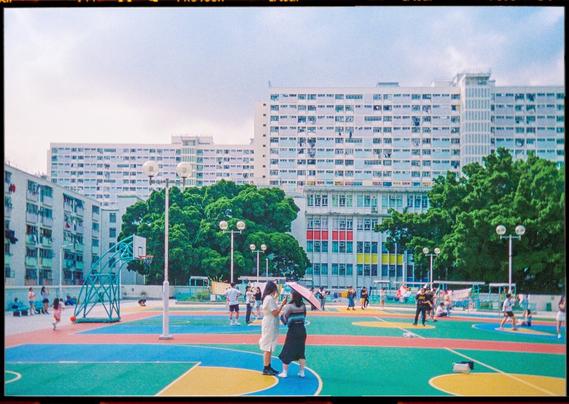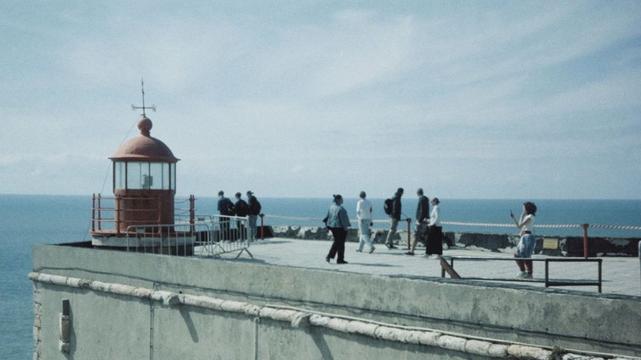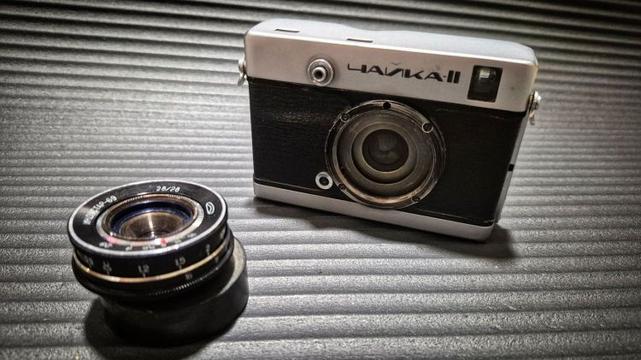#halfframe
Olympus Pen half frame camera, Ilford HP5, developed in Adox XT3
#cherryblossom #spring #printemps #argentique #homedeveloped
#analogue #believeinfilm #filmisnotdead #halfframe #ilfordhp5
#olympuspen #blackandwhite #sakura #japanesecherry
The #FrugalFilmProject, April 2025: A Morning Out in Aveiro
This month with the Golden Wonder (a.k.a the Welta Penti II, half-frame camera) we had a morning in Aveiro. The actual plan was to test out a new (to me) Horizon 202 panoramic camera, but of course I had to bring along with me the Golden Wonder and a roll of Harman Phoenix. No redscaling this month, just a leisurely walk around the city.
I was dropped off near the hospital in Aveiro, which is close to my favourite footbridge, the wonderful metal structure in the Parque Infante Dom Pedro. I sat on a bench near the footbridge and loaded the Golden Wonder with a fresh canister of film. Actually, I was lucky. On the spur of the moment, when selecting the canister of film from my little box I had added an empty canister to the camera bag ‘just in case’. That was a good idea, as when I opened the back of the Penti II it was empty!
I loaded the fresh canister, and the empty canister, into the Penti II and closed it up. As an aside, the Golden Wonder is really tough to open and close. I’m not sure if the back plate is becoming twisted. I hope that it lasts the year. I took a walk around the bridge and photographed it from various angles, Also in the park is the bandstand that is a regular fixture of my walks around Aveiro and for the first time I went to the water tower to one side of the park.
From the Parque I took a walk down to the canals near the centre of Aveiro, and then down to the Yacht Club. From there I walked to the circular footbridge, known in Aveiro as the Ponte do Laço, before heading for the railway station and the journey home. On the way I finished off the film in the Horizon 202, before unloading the camera and dropping the film at the lab. I still had a few frames left in the Golden Wonder, though, so I brought the camera home and used the last few frames in a walk around the nearby village of Águas Boas.
For exposure I used the Camera Meter app and rated the film at ISO 125. I normally rate Harman Phoenix at ISO 160, but this time I used 125 as it is the box speed of Harman Red, which I had loaded into the Horizon 202, and I was feeding a little lazy with the metering. In the event, the exposure was fine. Harman Phoenix kept its high contrast tonality, and some of the images came out really well. I’ve posted the whole roll in an album on my Flickr, light leaks and all, if you want to see the rest of the images.
If you are on Mastodon, you can now follow this blog directly. Just go to Mastodon and follow the ‘Snapshot’ WordPress account at @keithdevereux.wordpress.com. All new posts will be automatically updated to your timeline.
#HarmanPhoenix #Agfa #AgfaRapid #FrugalFilmProject #HalfFrame #Penti2 #Rapid #RapidFilm #Welta
• Zeiss Ikon Taxona (Germany, 1953-1954)
• Carl Zeiss Tessar f/3.5 37.5 mm
• Kodak Professional Portra 160/36
#analogphotography #art #believeinfilm #croatia #fotografiaanalogowa #halfframe #kodak #landscape #landscapephotography #mountains #portra160
A new #camera among my favorites: the #Olympus Pen-FT! A #halfframe #SLR with #interchangeable #lenses designed with good ideas!
https://adopteunboitierphoto.fabien-nguyen.fr/galerie.html?page=olympus_pen_ft
Fujifilm Pro 400H
#staybrokeshootfilm35mm #filmcommunityph #analogphotographyph #y35mag #pro400h #fujifilmpro400h #fujipro400h #filmisnotdeadph #f8filmlab #analogclub #analogdrivemag #pushnpulll #filmisnotdeadph #halfframe #analognights #filmtweakers #longlivefilm #filmaddict #pointandshootcamera #filmdiscovered #pellicolamag #eyeshotmag #afilmcosmos #kodakektarh35n #halfframeclub
• Zeiss Ikon Taxona (Germany, 1953-1954)
• Carl Zeiss Tessar f/3.5 37.5 mm
• Kodak Professional Portra 160/36
#analogphotography #art #believeinfilm #croatia #fotografiaanalogowa #halfframe #kodak #landscape #landscapephotography #mountains #portra160
And yet, it was a very sad day for many in #Ghent. #pentax17 #halfframe and #kodak #colorfilm #analog is timeless. #filmphotography #Gent #thisisbelgium #streetphotography #photography #ishootfilm #grainisgood
Lens-Artists Challenge #343: Seen on my Last Outing
‘What happened on Your last outing?’ asks Ann-Christine from To See a World in a Grain of Sand, our host for this week’s Lens-Artists Challenge. ‘Did you meet a friend or … go shopping? What made you take out your camera?’ Well, we went out for lunch in the seaside town of Vagueira, so of course I took along a couple of cameras.
It all started the week before, actually, with a trip to the now famous seaside town of Nazaré. Until a few years ago, Nazaré was just a sleepy seaside town. Yes, it was popular in the summer. Everywhere is in Portugal, a country where one whole side, from north to south is beaches, but what really put Nazaré on the map was Garrett Macnamara.
A Big Wave surfer rides the giant waves at Nazaré. (Not my photograph, courtesy of Wikimedia)This big wave surfer ‘discovered’ that in the winter Nazaré delivered the ultimate in big waves. He even set a new world record here (since broken by German surfer Sebastian Steudtner, also at Nazaré), and now Nazaré is a mecca for all types of surfer. It’s also famous for the Forte de São Miguel Arcanjo, a small fort and lighthouse that sits at the tip of a promontory overlooking the Atlantic Ocean. With its distinctive tiny lighthouse, the lighthouse is now famous for photographs of big wave surfers behind it.
Anyhow, all of this has little to do with my last outing, apart from the fact that when we went to Nazaré, I took with me one of my favourite cameras, the Nintendo Gameboy, and a camera that I’ve had for a long time but never actually got around to using before, the Bencini Koroll 2 medium format half-frame camera. It turned out that I didn’t use the full roll of film in Nazaré, so I thought I would finish off the film in Vagueira. The Gameboy was still in the same bag, so I brought that along, too.
After a lovely lunch we went for a walk along the sea front. I decided that from the restaurant to the end of the beach I would used the Gameboy, and on our return journey would finish off the last few frames in the Bencini. Just for a change, I thought I would try some street funtography (Gameboy photographs are known as ‘funtographs’, because the Gameboy is fun, I guess). It’s not that easy getting good images when your camera has a resolution of 0.014MP and you’re dealing with four shades of grey, but it’s rewarding when it works.
We were also lucky enough to see a motorised paraglider, who flew back and forth along the sea front. When we reached the Casablanca bar, at the top end of the Vagueira’s beach, I put away the Gameboy and brought out the Bencini Koroll 2. There were four frames left on the roll so I recorded some nearby buildings (previously posted on the Blog), and saved the last frame for the sculpture of a sardine on a fork in the towns main square.
And that was my last outing. Since then the weather has been dismal, though it’s a lovely sunny morning at the moment, so we’ve not been out since then. I do have plans for this week, mind. Perhaps for a future Challenge (😉).
Themes for the Lens-Artists Challenge are posted each Saturday at 12:00 noon EST (which is 4pm, GMT) and anyone who wants to take part can po3st their images during the week. If you want to know more about the Challenge, details can be found here, and entries can be found on the WordPress reader using the tag ‘Lens-Artists’.
If you are on Mastodon, you can now follow this blog directly. Just go to Mastodon and follow the ‘Snapshot’ WordPress account at @keithdevereux.wordpress.com. All new posts will be automatically updated to your timeline.
#2Bit #Bencini #Challenge #Funtography #Gameboy #HalfFrame #LensArtists #MyLastOuting #PixelArt #Portugal #Retro #Vagueira #LensArtists
🎞️Kodak Gold 200
#halfframe #diptych #filmisnotdead #shootfilmgobroke #filmphotography
Gear:
• Zeiss Ikon Taxona (Germany, 1953-1954)
• Tessar f/3.5 37.5 mm
• Kodak Professional Portra 160/36
#analogphotography #art #believeinfilm #croatia #fotografiaanalogowa #halfframe #kodak #landscape #landscapephotography #mountains #nature #portra160
Fujifilm Pro 400H
#staybrokeshootfilm35mm #filmcommunityph #analogphotographyph #y35mag #pellicolamagazine #pulsefilms #filmisnotdeadph #mistyfocusmag #f8filmlab #analogclub #analogdrivemag #pushnpulll #filmisnotdeadph #halfframe #analognights #filmtweakers #longlivefilm #filmaddict #pointandshootcamera #filmdiscovered #pellicolamag #eyeshotmag #afilmcosmos #kodakektarh35n #halfframeclub
A Day Out in Nazaré with the Bencini Koroll 2
There are a few cameras in my collection of the weird and wonderful that I keep telling myself to use and never get around to doing so, and the Bencini Koroll 2 is definitely top of that list. The Koroll 2 is a heavyweight aluminium Italian camera from the 1960s. It’s an ugly, stocky beastie, really, and it certainly won’t win any prizes, but what sets it apart from other 120 cameras is that it’s half-frame.
When I first heard about the Bencini Koroll 2 I felt a slight sense of disbelief, too. A half-frame 120 camera, whoever heard of such a thing? In fact, it’s not even really half-frame, the Bencini Koroll 2 will take twenty-four 3×4.5cm images on a roll of 120 film, so there’s about 1.5cm of the film that doesn’t even get exposed. Why Bencini didn’t go for 6×4.5cm like Agfa’s Billy Clack is anyone’s guess, but there were have it. A not quite half-frame medium format camera.
There are several models in the Koroll series, from 35mm to medium format, and even variations with the series. Mine is the Koroll 2 (with the number), which has shutter speeds of 1/30, 1/60, and 1/125s (plus B) and apertures between f8 and f22. But apparently there’s also the Koroll II (with Roman numbers) with a more limited range of shutter speeds and apertures. Just for a change, I got the better deal.
We all went out on a day trip to Nazaré, and I thought it was time that the Koroll 2 joined us. In my New Year’s intentions I was determined to use this camera with 120 Harman Phoenix, but for this test roll I used some expired Lomochrome Metropolis (Jan. 2023) that has been sitting around for a few years. For metering I used the app Camera Meter on the smartphone and rated the Metropolis at ISO 100, the lower end of its 100-400 ISO range. I think this app might overexpose by about 1 stop, but I always forget to adjust for this. For the last few frames, though, I did actually try to underexpose by 1-stop according to the meter reading.
There are two red windows on the back of the camera, and when you load the film, wind it until the number ‘1’ appears in the left window. This is the first frame. Then, after taking a photo, wind on until the number 1 appears in the right window. This is the second frame. After taking the photo, wind on the camera until the number 2 appears in the left window (about five half turns), which is the third frame, and so on.
After finishing off the film during a lunch trip to Vagueira, I dropped it off at the lab, Forever Blue in Aveiro. Generally, I’m really happy with the results they produce, and they can be really fast sometimes. Sure enough, after a few hours the zipped files of images popped into my inbox, and checking through the images I couldn’t be happier.
The images came out great! Mostly I left the focus on infinity as I was photographing objects at a distance, but even at shorter distances the images came out perfect well, too. I reckon I’m right that the Camera Meter app overexposes by about one stop since the images of the buildings in Vagueira were much better exposed than the metered shots in Nazaré, though I was delighted with those.
I’ve posted the whole roll in an album on my Flickr, light leaks and all, if you want to see the rest of the images. In conclusion, I was really happy with the Bencini Koroll 2, and I’m just disappointed that it’s taken me so long to get around to using it. All in all, this test roll was a resounding success, and next time I’m definitely going to try some 120 half-frame with Harman Phoenix.
If you are on Mastodon, you can now follow this blog directly. Just go to Mastodon and follow the ‘Snapshot’ WordPress account at @keithdevereux.wordpress.com. All new posts will be automatically updated to your timeline.
#ExpiredFilm #HalfFrame #Lomochrome #Mediumformat #Welta #Bencini #Koroll2 #Metropilis #Nazare #portugal
Another Contender for The Crappy Commie Camera Challenge: The Chaika II Half-frame Camera
I came across this one by accident (if ever anything is ‘accidental’ when I’m browsing the Kamerastore website), and as it’s a half-frame camera there was instant appeal. It also has a lovely little 28mm pancake lens and I was immediately wanting to try this M39-mount lens on my micro four-thirds cameras, but more on that later.
The Chaika II is a heavy beast, weighing over 300g and made of metal with plastic innards. It features shutter speeds of 1/30s, 1/60s, 1/125s, 1/250s and B, and the interchangeable 28mm lens has apertures from f2.8 to f16. The Chaika II was made by Belomo in Minsk, then in the Soviet Union, between 1967 and 1972. It was called Chaika, meaning ‘seagull’ after the call-sign of cosmonaut Valentina Tereshkova, the first woman in space.
My model was in the ‘Not Passed’ category on the Kamerastore website and has ‘flaws that will affect typical use’. In this case, there ‘is fungus on the inner lens elements’, though the camera body itself is fully functional. I was interested in this model for two reasons: It was made in the Soviet Union, which is ideal for the upcoming Crappy Commie Camera Party (CCCP), and it’s a half-frame camera, and I’m really getting into half-frame at the moment with the Welta Penti II (which itself is fully CCCP compliant).
The camera body is fully functional, and is in nice condition. Like any Soviet era camera that I’ve ever had it has some unique features that make it an interesting user experience. For a start, the shutter button is on the front of the camera, just above the lens assembly. This is actually quite good, as when you are holding the camera your fingers are automatically directed away from the lens. The shutter speed is set from a little dial on the back of the camera, near the viewfinder, and the speed is visible through a little window on the top plate.
Like other Soviet cameras I have, like the Smena 8M, and the KMZ Horizont, the rewind knob is tucked away. In this case on the bottom of the camera combined with the film speed dial. If you pull on the knob and turn it clockwise it locks open. Then you can twist the knob to rewind the film.
Because it’s a half-frame camera, and I don’t really have the patience to use 72 frames on a 36 exposure roll, I used an ‘off-cut’ of Harman Phoenix film after respooling some film into Rapid canisters. This gave me a length of film equivalent to about 15 frames, which for me was ideal to test the camera, and a technique that I might use in the future.
For a camera that was supposed to be filled with fungus the images came out great! I will certainly have to get out the lens spanner and see if I can clean the elements, and the Harman Phoenix gave some strange colour shifts, but I really liked the results.
Oh, and about that business of wanting to use the M39 lens from the Chaika II with my micro four-thirds mirrorless cameras. That looks like it’s a non-starter, unfortunately. Apparently, the camera/lens combination was designed to be used with an Belomo enlarger that never actually materialised. So it’s not really an interchangeable lens camera but a dedicated half-frame lens that was could be removed and mounted in an enlarger. From what I gather, you can hack the lens so that it will focus to infinity on micro four-thirds cameras, but that means that the lens won’t then function properly on the Chaika II. So that’s not really something I want to do.
If you are on Mastodon, you can now follow this blog directly. Just go to Mastodon and follow the ‘Snapshot’ WordPress account at @keithdevereux.wordpress.com. All new posts will be automatically updated to your timeline.
#Belomo #CCCP #Chaika #Chaika2 #CrappyCommieCameraParty #HalfFrame #M39 #MadeInUSSR #Seagull #SovietCamera
